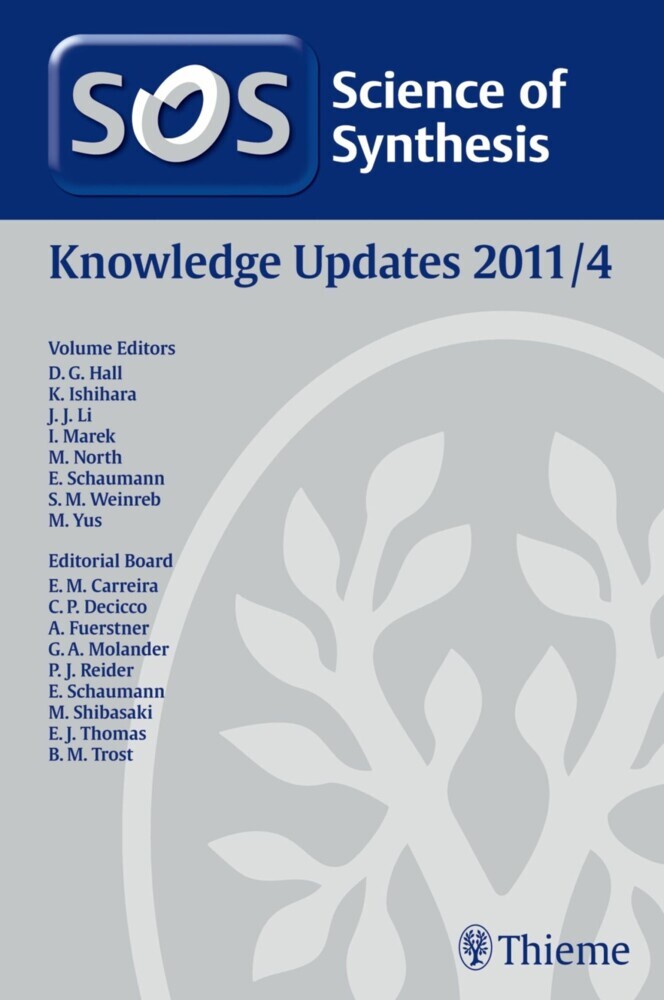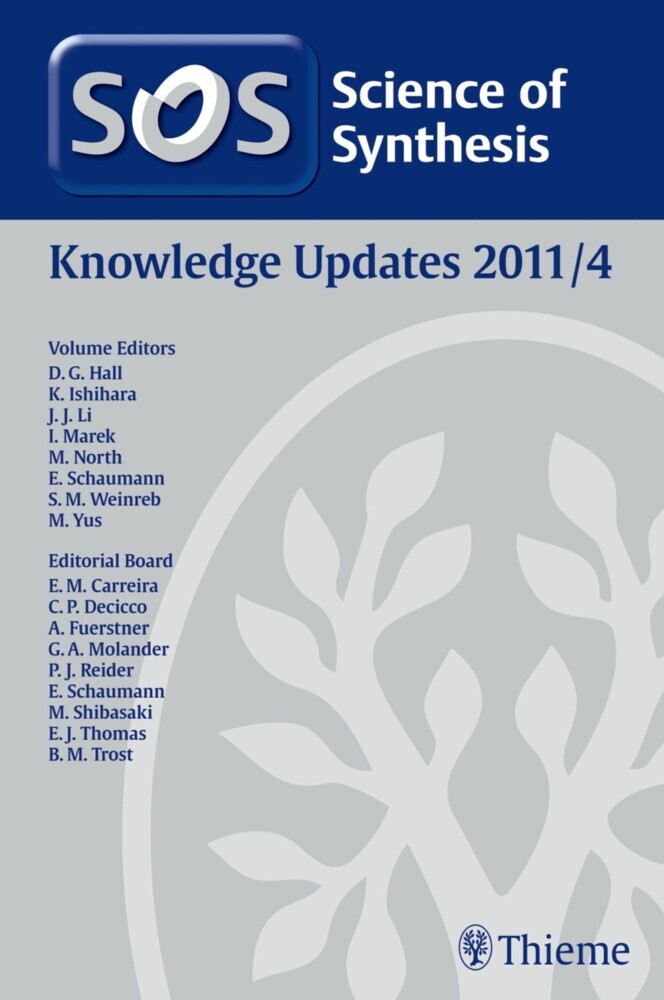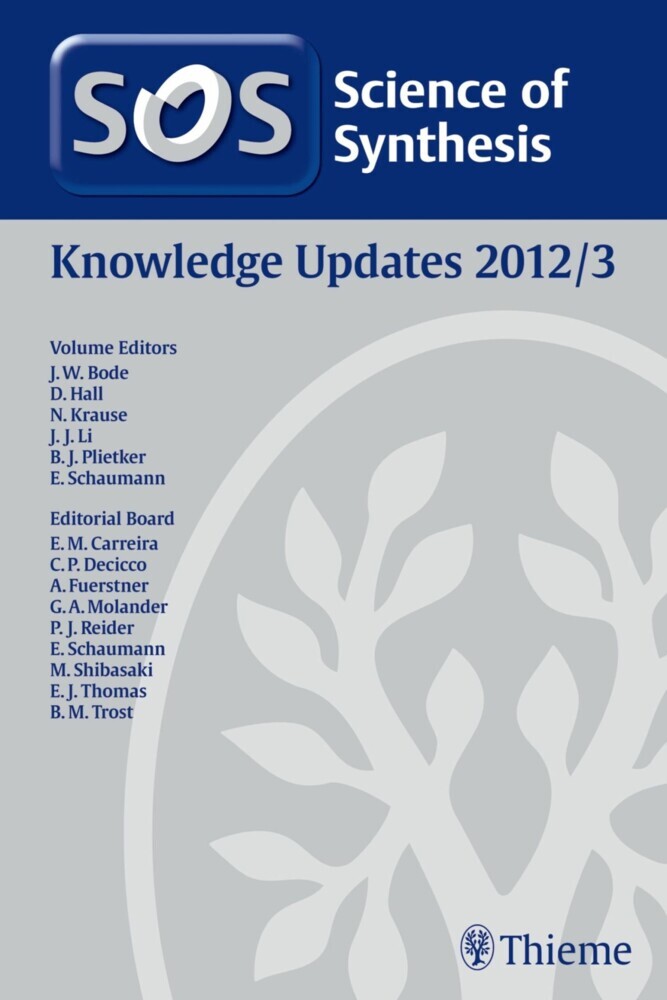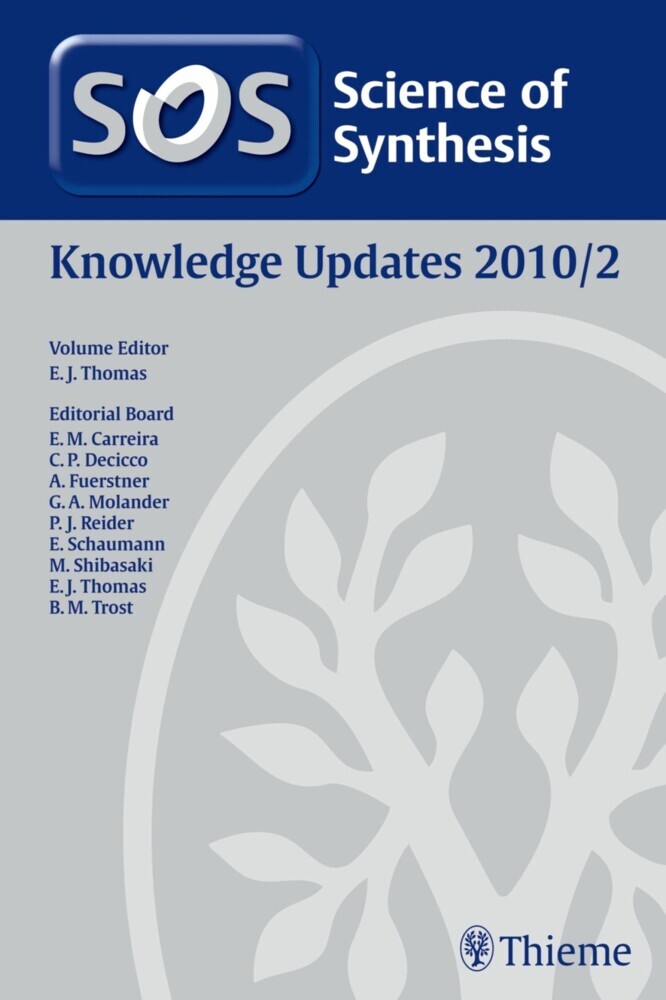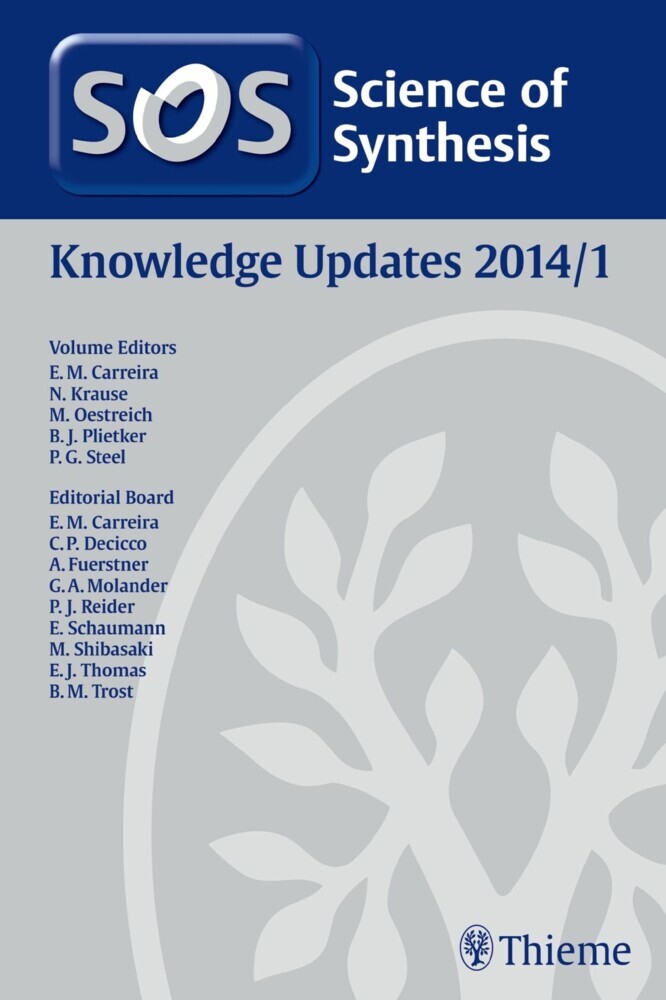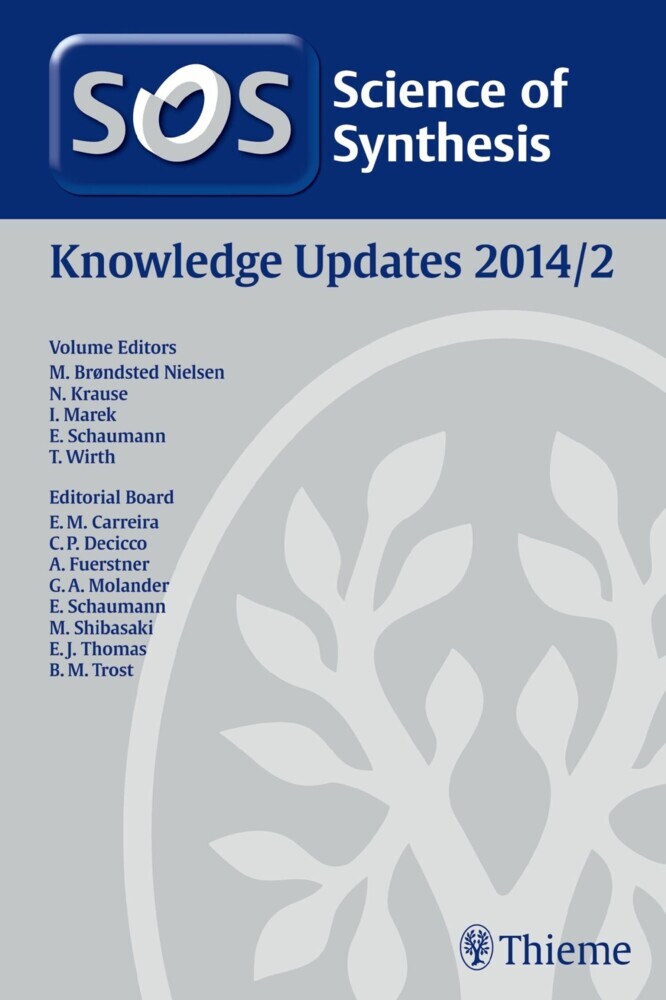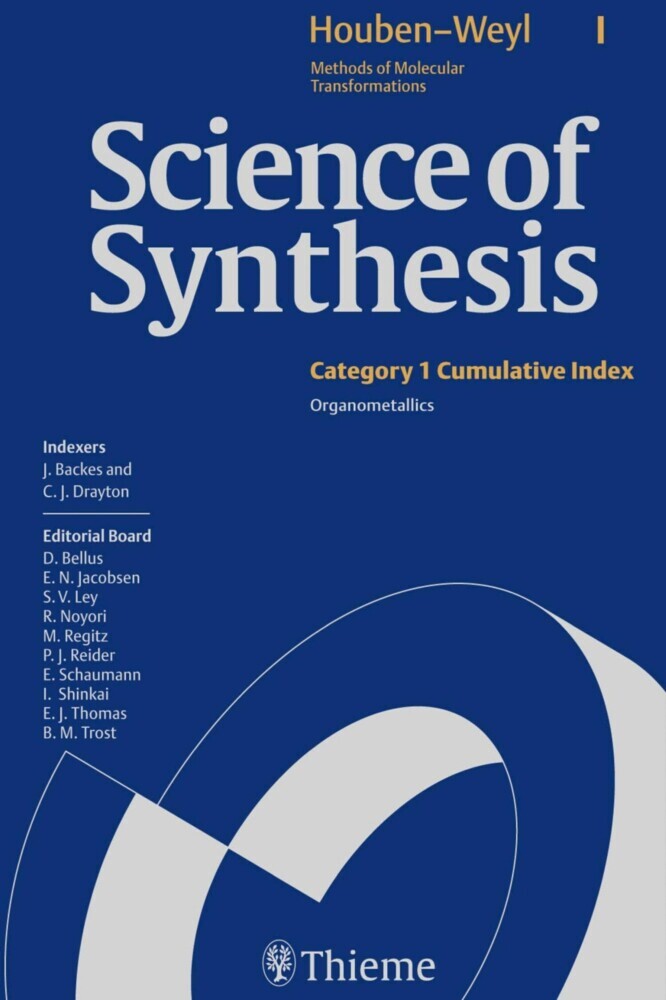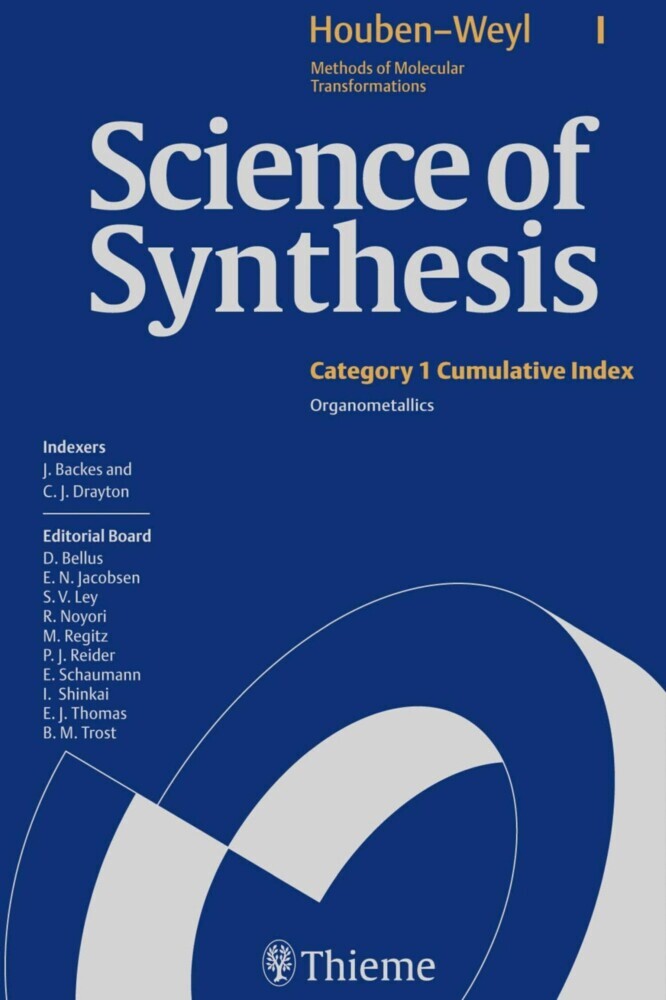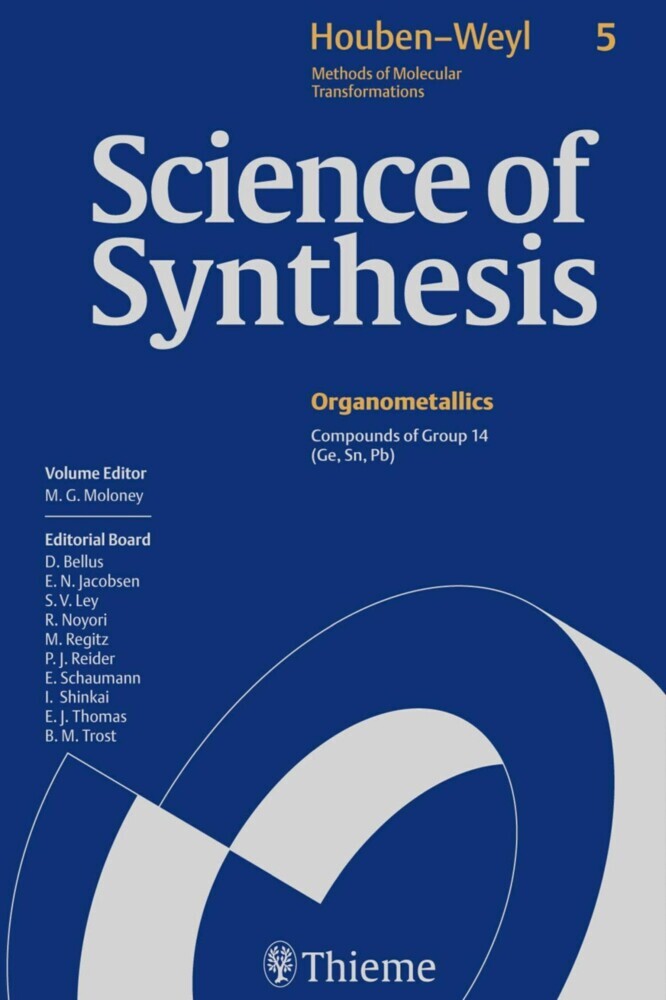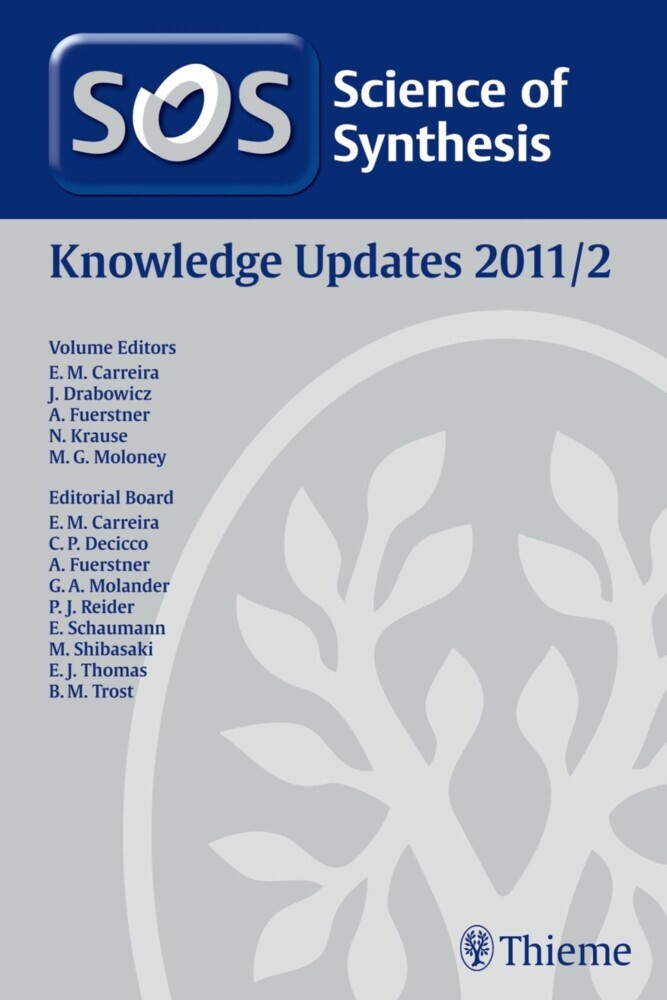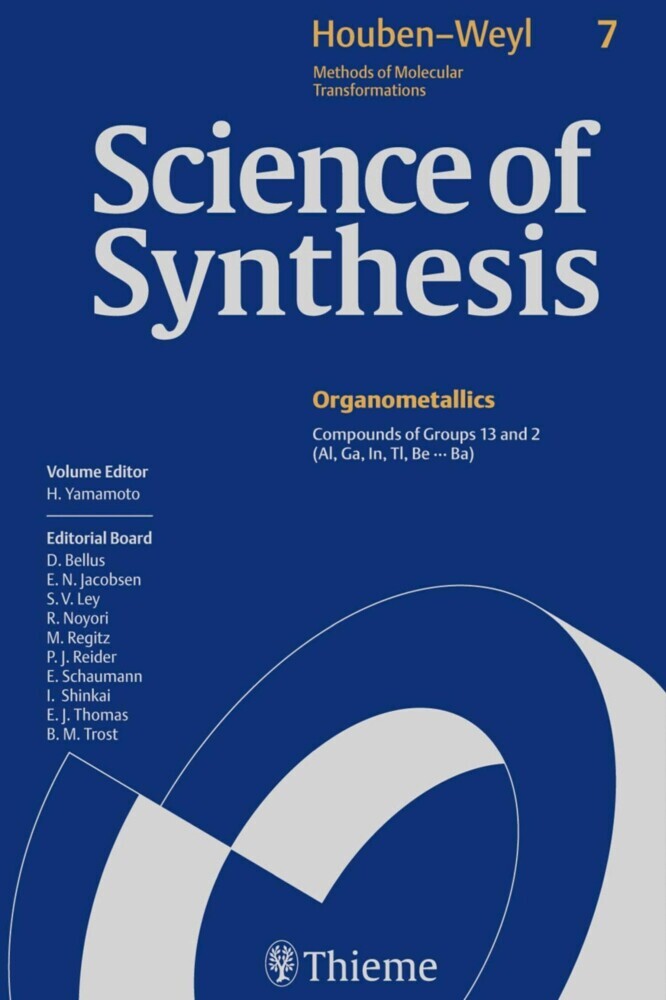Science of Synthesis Knowledge Updates 2011 Vol. 4
Science of Synthesis Knowledge Updates 2011 Vol. 4
The Science of Synthesis Editorial Board,together with the volume editors and authors, is constantly reviewing the whole field of synthetic organic chemistry as presented in Science of Synthesis and evaluating significant developments in synthetic methodology. Four annual volumes updating content across all categories ensure that you always have access to state-of-the-art synthetic methodology.
Content of this volume: Organometallic Complexes of Scandium, Yttrium, and the Lanthanides, Metallocene Complexes with Bis(trimethylsilyl)acetylene, Titanocene-Bis(trimethylsilyl)acetylene Complexes, Zirconocene-Bis(trimethylsilyl)acetylene Complexes, Hafnocene Bis(trimethylsilyl)acetylene Complexes, Boron Compounds, Aluminum Alkoxides and Phenoxides, Aluminum Amides, Dearomatization Reactions Using Organolithiums, Carbolithiation of Carbon-Carbon Multiple Bonds, Pyrazines, Six-Membered Hetarenes with More than Three Heteroatoms, Nitriles, Oximes.
1;Science of Synthesis: Knowledge Updates 2011/4;1 1.1;Title page;5 1.2;Imprint;7 1.3;Preface;8 1.4;Abstracts;10 1.5;Overview;16 1.6;Table of Contents;18 1.7;Volume 2: Compounds of Groups 7-3 (Mn···, Cr···, V···, Ti···, Sc···, La···, Ac···);32 1.7.1;2.12 Product Class 12: Organometallic Complexes of Scandium, Yttrium, and the Lanthanides;32 1.7.1.1;2.12.15 Organometallic Complexes of Scandium, Yttrium, and the Lanthanides;32 1.7.1.1.1;2.12.15.1 Lanthanide-Catalyzed Mukaiyama Aldol Reactions;32 1.7.1.1.1.1;2.12.15.1.1 Method 1: Non-enantioselective Formation of ß-Hydroxycarbonyls;32 1.7.1.1.1.2;2.12.15.1.2 Method 2: Enantioselective Formation of ß-Hydroxycarbonyls;35 1.7.1.1.1.2.1;2.12.15.1.2.1 Variation 1: In an Organic Solvent;35 1.7.1.1.1.2.2;2.12.15.1.2.2 Variation 2: In an Aqueous Solvent;38 1.7.2;2.14 Product Class 14: Group 4 Metallocene Complexes with Bis(trimethylsilyl)acetylene;42 1.7.2.1;2.14.1 Product Subclass 1: Titanocene-Bis(trimethylsilyl)acetylene Complexes;44 1.7.2.1.1;Synthesis of Product Subclass 1;44 1.7.2.1.1.1;2.14.1.1 Method 1: Reduction of a Dichlorobis(.5-cyclopentadienyl)titanium Derivative in the Presence of Bis(trimethylsilyl)acetylene;44 1.7.2.1.1.1.1;2.14.1.1.1 Variation 1: Reduction and Intramolecular Dehydrocoupling of Cyclopentadienyl Fragments;45 1.7.2.1.1.2;2.14.1.2 Method 2: Methane Elimination from Bis(.5-cyclopentadienyl)dimethyltitanium(IV);46 1.7.2.1.2;Applications of Product Subclass 1 in Organometallic Reactions;46 1.7.2.1.2.1;2.14.1.3 Method 3: Reactions with Brønsted Acids;46 1.7.2.1.2.1.1;2.14.1.3.1 Variation 1: Reaction with Methanol;48 1.7.2.1.2.2;2.14.1.4 Method 4: Titanocene-Bis(trimethylsilyl)acetylene Complexes in the Formation of Metallacycles;49 1.7.2.1.2.2.1;2.14.1.4.1 Variation 1: Formation of Five-Membered Group 4 Metallacycles;49 1.7.2.1.2.2.2;2.14.1.4.2 Variation 2: Formation of Six-Membered Metallacycles;50 1.7.2.1.2.2.3;2.14.1.4.3 Variation 3: Formation of Three-Membered Aza-metallacycles;51 1.7.2.1.2.2.4;2.14.1.4.4 Variation 4: Formation of Four- and Five-Membered Aza-metallacycles;53 1.7.2.1.2.2.5;2.14.1.4.5 Variation 5: Coupling Reactions of Dichlorophosphines and the Formation of Phospha-metallacycles;55 1.7.2.1.2.2.6;2.14.1.4.6 Variation 6: Formation of Stiba-metallacycles;56 1.7.2.1.2.2.7;2.14.1.4.7 Variation 7: Formation of Four-Membered Thia-metallacycles;58 1.7.2.1.2.2.8;2.14.1.4.8 Variation 8: Formation of Four-Membered Selena-metallacycles;59 1.7.2.1.2.3;2.14.1.5 Method 5: Titanocene-Bis(trimethylsilyl)acetylene Complexes in Supramolecular Chemistry;59 1.7.2.1.2.3.1;2.14.1.5.1 Variation 1: Dehydrogenative Coupling;62 1.7.2.1.2.4;2.14.1.6 Method 6: Titanocene-Bis(trimethylsilyl)acetylene Complexes in Bond-Activation Reactions;63 1.7.2.1.2.4.1;2.14.1.6.1 Variation 1: Dinitrogen Activation;63 1.7.2.1.2.4.2;2.14.1.6.2 Variation 2: C--F Bond Activation;64 1.7.2.1.2.4.3;2.14.1.6.3 Variation 3: C--C Single-Bond Metathesis;65 1.7.2.1.2.5;2.14.1.7 Method 7: Catalytic Hydroamination of Alkynes;66 1.7.2.1.2.6;2.14.1.8 Method 8: Catalytic Dehydrogenation of Dimethylamine Borane;67 1.7.2.1.2.7;2.14.1.9 Method 9: Oxidation Reactions;67 1.7.2.1.2.8;2.14.1.10 Method 10: Reactions with Alkynes: Alkyne Substitution Reactions;68 1.7.2.1.2.8.1;2.14.1.10.1 Variation 1: Reactions with Alkynylsilanes;70 1.7.2.1.2.8.2;2.14.1.10.2 Variation 2: Reactions with Polyynes;70 1.7.2.1.2.9;2.14.1.11 Method 11: Lewis Base Exchange;72 1.7.2.1.2.10;2.14.1.12 Method 12: Reactions with Carbon Dioxide;72 1.7.2.2;2.14.2 Product Subclass 2: Zirconocene-Bis(trimethylsilyl)acetylene Complexes;73 1.7.2.2.1;Synthesis of Product Subclass 2;73 1.7.2.2.1.1;2.14.2.1 Method 1: Reduction of a Dichlorobis(.5-cyclopentadienyl)zirconium(IV) in the Presence of Bis(trimethylsilyl)acetylene;73 1.7.2.2.1.1.1;2.14.2.1.1 Variation 1: By Ligand Substitution;75 1.7.2.2.2;Applications of Product Subclass 2 in Organometallic Reactions;76 1.7.2.2.2.1;2.14.2.2 Method 2: Reactions w
| ISBN | 9783131787712 |
|---|---|
| Artikelnummer | 9783131787712 |
| Medientyp | E-Book - PDF |
| Copyrightjahr | 2014 |
| Verlag | Georg Thieme Verlag KG |
| Umfang | 566 Seiten |
| Sprache | Englisch |
| Kopierschutz | Digitales Wasserzeichen |

